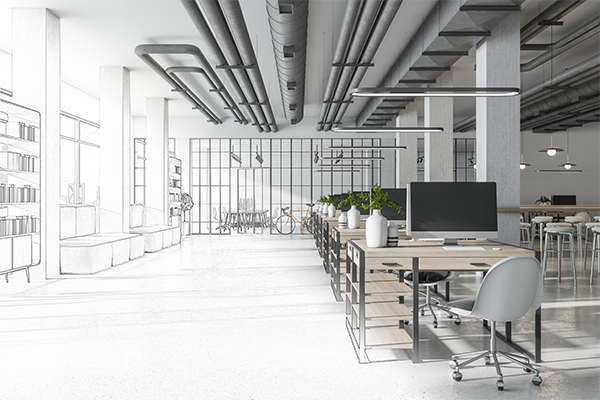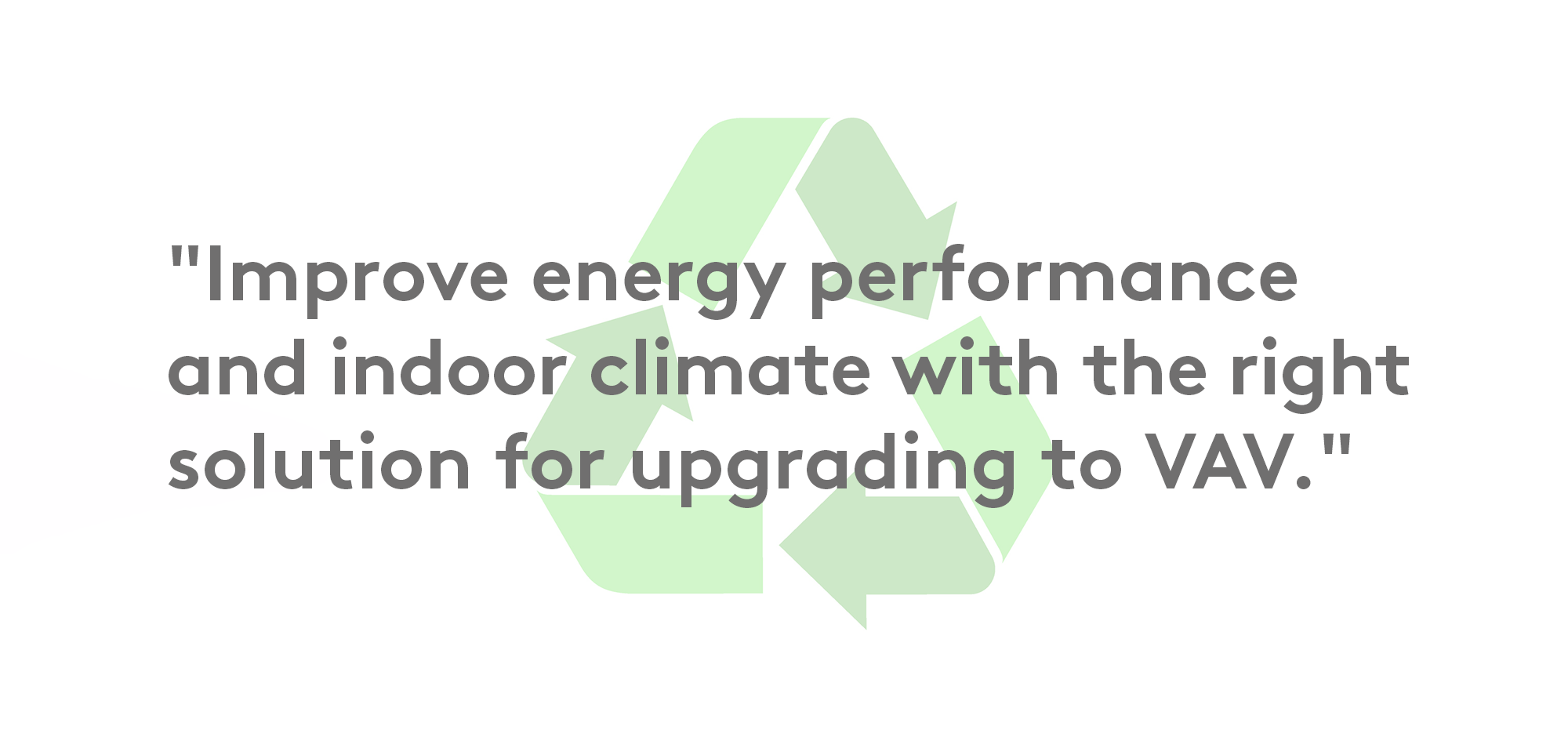Only a very small proportion of the building stock increases annually from newbuilds. The majority of the building stock is made up of existing premises, many of which are currently energy-inefficient. In 30 years’ time, a large proportion of these buildings will still be standing, which means that achieving the current climate goals will require a major renovation drive. This applies equally to outdated solutions for ventilation, heating and comfort cooling, which hold high potential for improvement. With the right solutions, constant airflow systems (CAV) can easily be upgraded to variable airflow (VAV). In that way, both the building’s energy performance and the quality of its indoor climate can be improved, which, in turn, has positive impact on the building occupants.
The existing building stock poses a major challenge for current climate goals
Only 1% of the building stock increases annually from newbuilds. The remainder is made up of existing building stock. At the same time, the building and construction sector accounts for more than one third of EU emissions, and three quarters of the building stock are currently energy-inefficient. Since we know that 85-95% of existing buildings will still be standing by the year 2050, focusing on energy efficiency will not be sufficient. A huge renovation drive will be required to achieve the current climate goals. While energy consumption is a major factor, the health and well-being of building occupants is equally crucial, and definitely not a factor to be overlooked. You can learn more about office renovations in our guide: Office renovation and refurbishment.
Huge potential for improvement, but difficult to realise
Outdated ventilation and indoor climate systems in existing properties hold great potential for upgrade and improvement. Solutions for variable airflow, VAV, can reduce the energy used by fans, heating and comfort cooling significantly compared to solutions for constant airflow, CAV, which are typically installed in existing buildings. Meanwhile, there is high potential for improving the indoor climate, which benefits the well-being and performance of the occupants in a building.
Many solutions for VAV are not optimised for CAV system upgrades, as they require reconstruction of the entire ventilation system, or are difficult to integrate into existing systems. As a result, such upgrades are typically deferred or abandoned altogether, or the existing ventilation system is scrapped completely or replaced from scratch. This type of complete replacement of an existing CAV system is neither environmentally responsible, or, in many cases, economically viable. Ventilation ducts and certain indoor climate products could in many cases have been reused in order to avoid wasteful disposal. Besides which, all-new replacement is a substantial investment, while rental income is not received during the renovation period. In addition, there is often little oversight concerning indoor climate performance before the renovation project gets underway, meaning that in some properties it might have been sufficient to upgrade just parts of the existing system.
Pick the right solution for an easy and efficient upgrade
Solutions are available that enable easy and efficient upgrading of a CAV system to VAV. One good idea can be to start by analysing the existing indoor climate to determine which measures will be most effective in achieving a good indoor climate and sound energy performance. A complete replacement of an existing system may actually prove unwarranted if only certain components need replacing or a limited number of components need to be added. An analysis also provides a great baseline for verifying the improvements of a completed upgrade.
By choosing the right solution for upgrading to VAV, a few components such as flow control dampers or indoor climate products with integrated solutions for variable flow can be installed in selected rooms or parts of a building. These can also be combined with room controllers for measurement and control. The recommendation is to start with those rooms in which the demand is highest and the benefits most apparent, and then scale up successively. In that way, disruption to business can be minimised, and the investment can be spread out over time. In some cases, existing indoor climate products will be worth retaining, and many of these can be integrated into the new VAV solution
Ultimately, it’s a good idea to follow up on the improvements that have been made, to ensure that the intended aims have been achieved. Many VAV systems can be supplemented by indoor climate visualisations, which have proved effective in significantly reducing dissatisfaction and complaints concerning the indoor climate.
In sum, existing CAV systems can be upgraded to VAV easily and efficiently by choosing the right solution. In many cases, the whole existing system will not need to be replaced because it is sufficient to expand it with additional components and, if necessary, replace a limited number of components, to achieve a good indoor climate and sound energy performance.
Learn and read more about REACT – Swegon’s adaptable solution for easy CAV to VAV upgrades.

























.jpg?width=75&name=Image%20(5).jpg)








.jpg?width=75&name=magnus%20andersson_550x550%20(1).jpg)











.jpg?width=75&name=0%20(1).jpg)





-4.png?width=75&name=MicrosoftTeams-image%20(3)-4.png)















